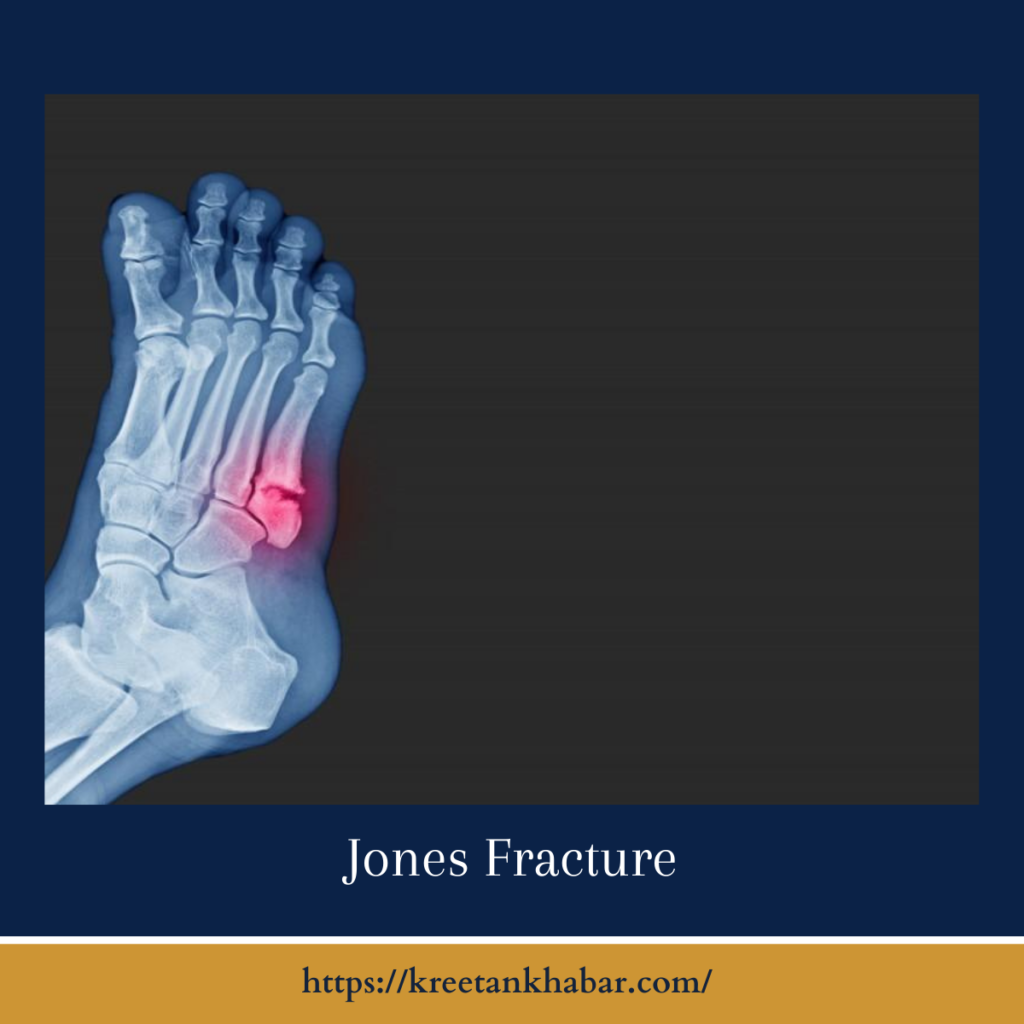Jones Fracture: Understanding, Treating, and Recovering from a Common Foot Woe
Introduction:
In the intricate ballet of bones and joints that make up the human foot, injuries like the Jones fracture take center stage, demanding attention and care. Named after Sir Robert Jones, the orthopedic surgeon who first described it in 1902, a Jones fracture is a specific type of fracture that occurs in the fifth metatarsal bone—the long bone on the outer side of the foot. Let’s pirouette through the details of this common foot woe, exploring its causes, symptoms, treatment options, and the dance of recovery that follows.

Unraveling the Anatomy:
The fifth metatarsal, a slender bone that connects the midfoot to the little toe, is susceptible to fractures, with the Jones fracture occurring at the base of this bone. The unique location of the fracture, often in an area with poor blood supply, can complicate the healing process and requires specific considerations in treatment.
The Dance of Causes and Risk Factors:
Jones fractures are typically the result of overuse, trauma, or stress on the foot. Athletes, particularly those engaged in activities that involve sudden changes in direction or repetitive stress, are often prone to this type of fracture. Dancers, hence the apt metaphor of a dance with the Jones fracture, are also at an increased risk due to the constant impact and stress placed on the foot during performances.
- Overuse and Repetitive Stress:
- One of the primary causes of Jones fractures is overuse and repetitive stress on the fifth metatarsal bone. Athletes engaged in activities that involve constant impact and directional changes, such as basketball players and dancers, are particularly prone to this type of fracture.
- Trauma or Sudden Injury:
- Trauma or a sudden injury to the foot, such as a forceful impact or a twisting motion, can lead to a Jones fracture. Accidents or missteps can place excessive stress on the fifth metatarsal, resulting in a fracture at the base of the bone.
- Inadequate Footwear:
- Wearing improper or ill-fitting footwear can contribute to the development of Jones fractures. Shoes that lack proper support or do not provide adequate cushioning may increase the risk of stress fractures in the foot, including those affecting the fifth metatarsal.
- Biomechanical Factors:
- Individual differences in foot structure and biomechanics can influence the risk of Jones fractures. High arches or abnormal foot mechanics may place uneven stress on the metatarsals, increasing the vulnerability of the fifth metatarsal to fractures.
- Previous Fractures or Foot Issues:
- Individuals with a history of foot fractures or those who have pre-existing foot conditions may be at a higher risk of developing Jones fractures. Weakened bones or altered foot mechanics from previous injuries can contribute to increased susceptibility.
- Age and Gender:
- Jones fractures are more commonly seen in certain age groups, particularly in young athletes and individuals in their 40s. Additionally, there is a higher prevalence among males, although the risk exists for both genders.
- Reduced Blood Supply:
- The fifth metatarsal, especially the base where Jones fractures occur, has a relatively poor blood supply. This limited blood flow can hinder the healing process, making fractures in this region more challenging to recover from and potentially increasing the risk of complications.
- Inadequate Warm-up and Conditioning:
- Failing to warm up adequately before engaging in physical activities and sports can contribute to the risk of Jones fractures. Cold muscles and ligaments may be less flexible, making the foot more susceptible to stress and injury during movement.
Understanding the causes and risk factors associated with Jones fractures is crucial for both prevention and early intervention. Individuals engaging in high-impact activities or those with predisposing factors should be attentive to foot health, adopt proper footwear, and incorporate preventive measures to minimize the risk of developing this common foot ailment.
Spotlight on Symptoms:
Identifying a Jones fracture involves paying attention to the cues that the foot sends. Common symptoms include pain, swelling, and bruising on the outer side of the foot. Weight-bearing on the affected foot becomes a challenge, turning a simple step into a painful choreography.
Navigating the Treatment Choreography:
The management of a Jones fracture requires a carefully choreographed treatment plan. Depending on the severity of the fracture, treatment options may range from conservative measures to surgical intervention:
- Immobilization and Rest:
- For minor fractures, a period of immobilization with a cast or walking boot is often prescribed to allow the bone to heal. Rest becomes a crucial component of the recovery dance, with limited weight-bearing on the affected foot.
- Surgical Intervention:
- In cases where the fracture is more severe or fails to heal with conservative measures, surgical intervention may be necessary. This typically involves the placement of screws or other fixation devices to stabilize the bone and facilitate proper healing.
- Physical Therapy:
- The dance towards recovery often includes the graceful guidance of physical therapy. Therapeutic exercises help improve strength, flexibility, and overall function of the foot, ensuring a smooth transition back to weight-bearing activities.
The Encore: Rehabilitation and Prevention:
As the final notes of the healing symphony play, the encore involves a gradual return to normal activities. However, preventing a repeat performance of the Jones fracture is paramount. This includes paying attention to footwear, incorporating proper warm-up routines, and gradually increasing activity levels to avoid overloading the foot.
Conclusion:
In the intricate dance of foot health, a Jones fracture takes center stage as a common yet nuanced injury. Understanding its dynamics, seeking prompt medical attention, and following a comprehensive treatment plan are essential steps in twirling through the recovery journey. So, whether you’re a dancer, an athlete, or someone who simply loves to move, acknowledging the nuances of the Jones fracture ensures that your feet continue to dance gracefully through the rhythm of life.
Read also : Exploring the Delightful Boost of the Green Tea Shot 2023